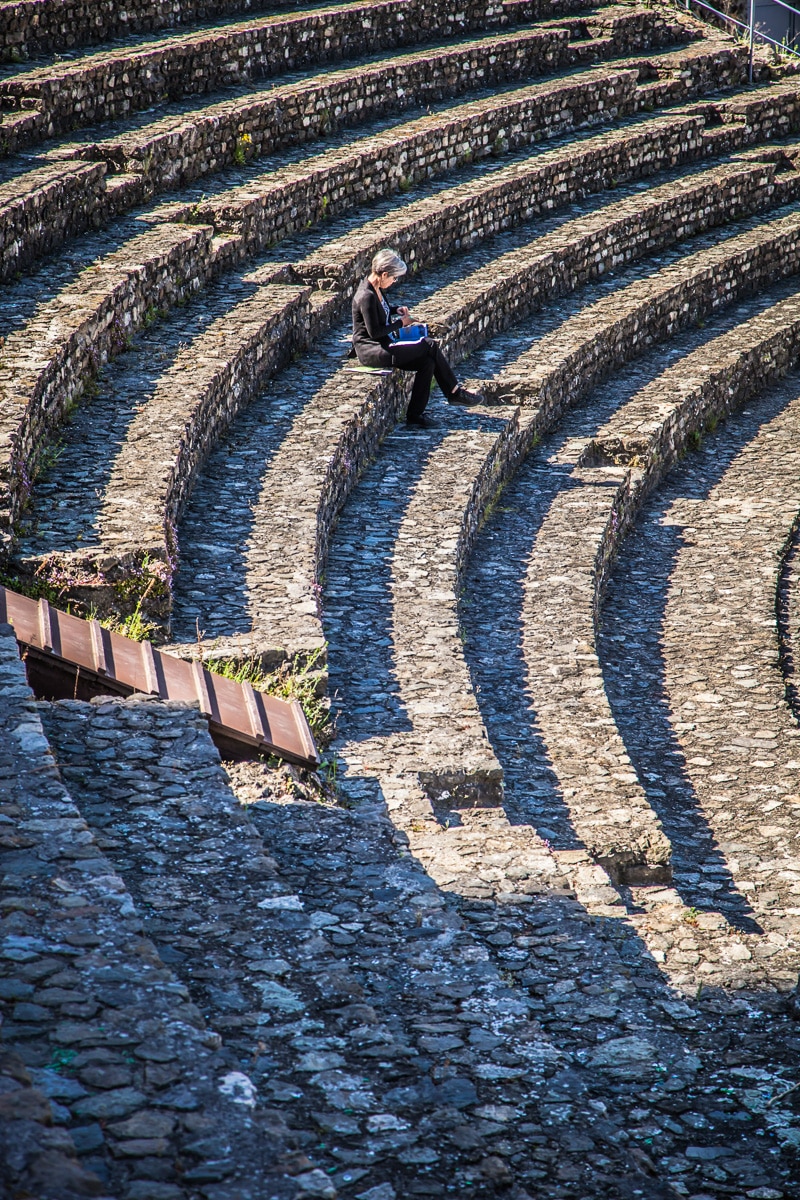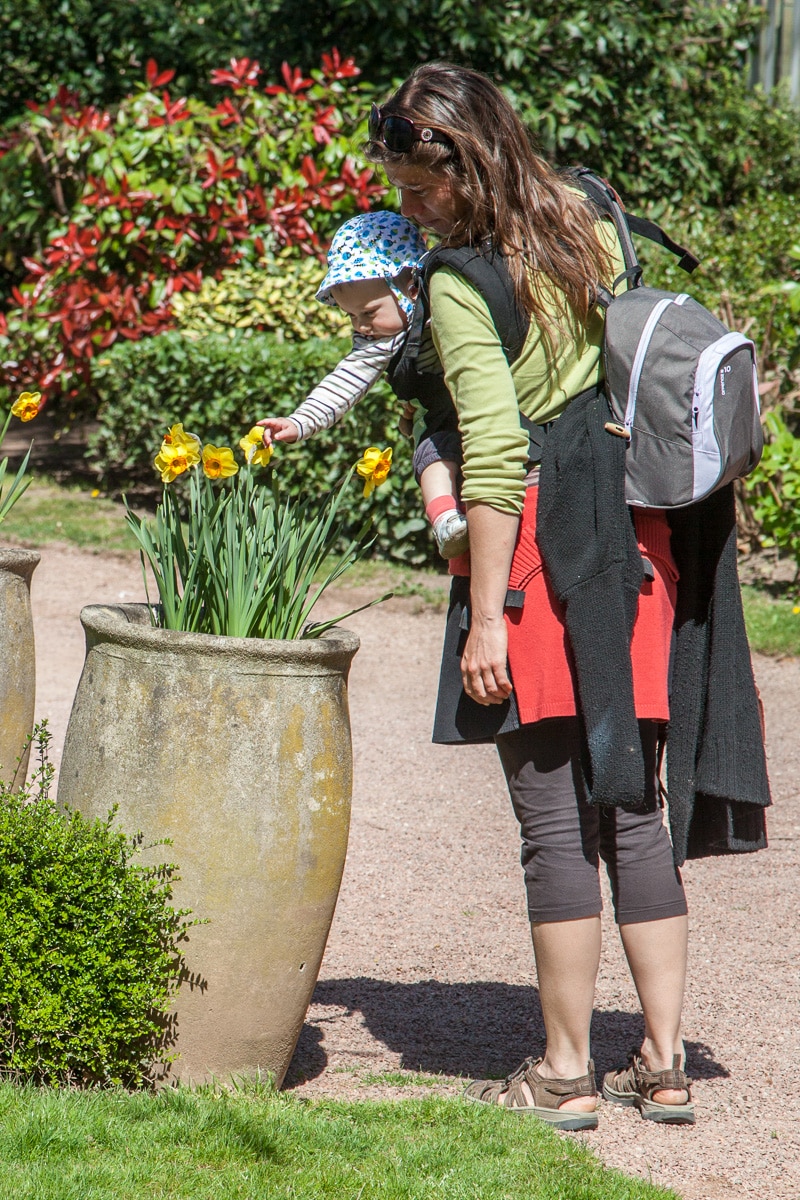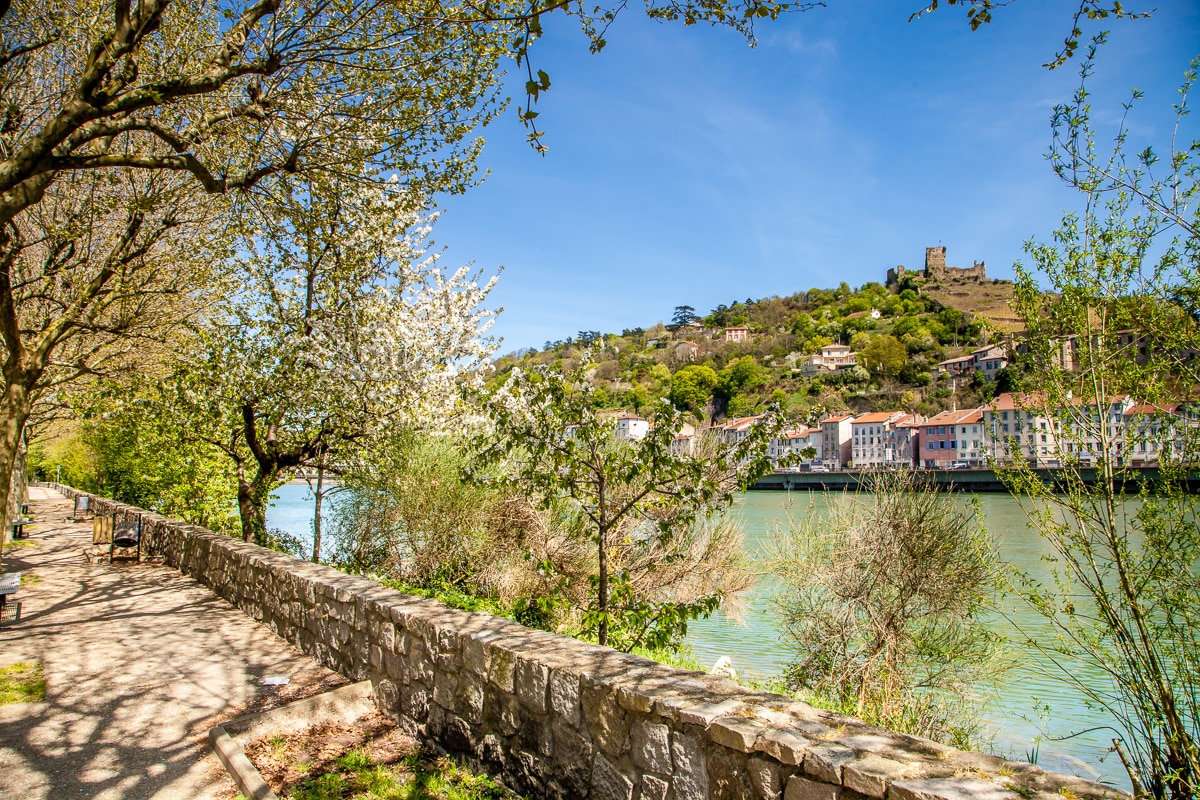We were in need of a day-trip. So we closed our eyes and stuck a pin in the map. Well not really. Our excursions are pretty much dictated by the train routes that are available, and we generally look for locations that are no more than 2-hours away. Of course there truly are lots of options in any direction, which is an additional reason we chose to be in Lyon for a longer stay.
 This particular Monday we chose to go to Vienne, not to be confused with Vienna, Austria 1100 km (720 mi) ENE away. Vienne is located on the Rhône River in southeastern France, about 32 km (20 mi) south of Lyon.
This particular Monday we chose to go to Vienne, not to be confused with Vienna, Austria 1100 km (720 mi) ENE away. Vienne is located on the Rhône River in southeastern France, about 32 km (20 mi) south of Lyon.
The train followed the Rhône River past several small towns and through beautiful countryside before we arrived at Vienne. It was a brisk, sunny day as we made our way to the tourist information office where we obtained a cart de la ville (map of the city) and some suggestions for the day.
There is a walking route laid out through the city, identified by brass markers imbedded in the sidewalks and pavement, making it rather easy to follow the route. It is also coordinated with the tourist map that shows the significant buildings and structures.
As we made our way along the route, the colorful spring flowers and bright, new growth on the trees made the day even more beautiful. We passed the remains of a Roman wall that were incorporated into a modern new structure reminding us of the vast history that exists here.
 Soon we came upon Saint Pierre le Bas, one of the oldest surviving churches in France. Built within the walls of the Gallo-Roman city at the end of the fifth century, it was originally situated at a former cemetery, that was even earlier a residential area. In 1872 it was converted into a lapidary museum, and still is, but was closed in the morning. It is an impressive example of early Romanesque architecture, and surrounded by various pieces of Roman stone artifacts and coffins.
Soon we came upon Saint Pierre le Bas, one of the oldest surviving churches in France. Built within the walls of the Gallo-Roman city at the end of the fifth century, it was originally situated at a former cemetery, that was even earlier a residential area. In 1872 it was converted into a lapidary museum, and still is, but was closed in the morning. It is an impressive example of early Romanesque architecture, and surrounded by various pieces of Roman stone artifacts and coffins.
As we wandered further we came across the Early Imperial temple of Augustus and Livia, a beautifully intact example of Roman architecture. It was first built by the emperor Claudius sometime between 20BC and 10BC and rededicated at the end of the 1st century AD. It owes its survival, like the Maison Carrée at Nîmes, to being converted to a Christian church. During the Revolutionary “Reign of Terror” it was used for the local “Festival of Reason”.
As we moved along the walking route, we came across the Cathédrale Saint-Maurice de Vienne. Built between 1052 and 1533, its most striking portion is the west front, which rises majestically on a terrace overlooking the Rhône. Unfortunately, the sculptural decorations were badly damaged by the Protestants in 1562, during the French Wars of Religion.
 Back before the Romans arrived, Vienne was a Gallic capital. By 47 BC under Julius Caesar, Vienne had developed into a major urban center along the Rhône River, a major trade route. Many remains survive of the Roman culture and can still be found in modern Vienne.
Back before the Romans arrived, Vienne was a Gallic capital. By 47 BC under Julius Caesar, Vienne had developed into a major urban center along the Rhône River, a major trade route. Many remains survive of the Roman culture and can still be found in modern Vienne.
Our next stop on the walking circuit was the ancient Roman theatre that seats 13,000 persons, and is still used for events and concerts, including a major jazz festival held in Vienne for two weeks at the beginning of July each year. It is remarkable to sit on the stone seats just as people did well over 2000 years ago.
The walking route took us to “Jardin archéologique de Cybèle” that contain arches, walls, and the remains of a road beautifully surrounded by gardens.
As the day wore on, it became time for lunch, and so we located a small bistro that we had researched earlier. Le Bistro d’Auguste turned out to be worthy of the good reviews we had read. Traditional French food, all made with the freshest ingredients and served with simple elegance and a smile.
 The typical lunch options are usually displayed on a board outside the restaurant listing the “Plat du jour”. Also listed on the handwritten slate are the entrees and desserts of the day. There are three primary options: an entree and a plat (sort of an appetizer and main dish), a plat and a dessert, or all three. The first two are usually the same price, while the third is a bit more expensive. We also ask for a carafe d’eau (water) and un verre de vin (glass of wine), and I usually have un café (espresso) after the meal. Jeannie will sometimes have a dessert if she feels she has walked enough.
The typical lunch options are usually displayed on a board outside the restaurant listing the “Plat du jour”. Also listed on the handwritten slate are the entrees and desserts of the day. There are three primary options: an entree and a plat (sort of an appetizer and main dish), a plat and a dessert, or all three. The first two are usually the same price, while the third is a bit more expensive. We also ask for a carafe d’eau (water) and un verre de vin (glass of wine), and I usually have un café (espresso) after the meal. Jeannie will sometimes have a dessert if she feels she has walked enough.
Feeling sated and comfortable after the meal, we sought out the local garden to find a comfortable bench in the sun to relax and enjoy the remains of our day in Vienne. The park was being well-used. People doing the same thing we were, enjoying the spring day, parents with small children running about or in strollers, or young people sitting about chatting and laughing.
 Having rested for a bit we began to wander some more and strolled along the Rhône and some of the small streets along the right bank. The swift moving river has a beautiful, shady, tree-lined promenade that allowed us to finish walking off our lunch before heading to the Gare de Vienne (train station) for the return to Lyon.
Having rested for a bit we began to wander some more and strolled along the Rhône and some of the small streets along the right bank. The swift moving river has a beautiful, shady, tree-lined promenade that allowed us to finish walking off our lunch before heading to the Gare de Vienne (train station) for the return to Lyon.
When we arrived at the station, all seemed well, but as we scanned the schedule to see which voie (track) our train would depart from, there was a new word to look up. Supprimé. Let’s see … deleted? Well as it turned out there was some sort of accident on the track closer to Lyon and all of the trains going to our station were cancelled.
What do we do? After a little word-crafting with a friendly, patient conductor, we were informed that there was a train just about to leave that would take us to a station on the other side of Lyon. Considering the excellent transport system in Lyon, it was only a slight inconvenience, and an additional, new adventure to add to our day.

Linda
22 Apr 2015How amazing that the stadium is still being used. What a beautiful day you had.
Alice Mathias
22 Apr 2015Loved your “story” and the pictures!